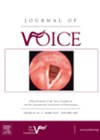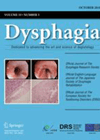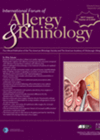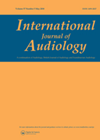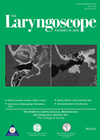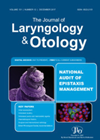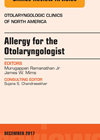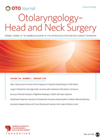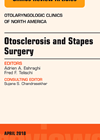
Journal Reviews
Long-term voice outcomes following transoral laser surgery versus radiotherapy for early laryngeal cancers
The oncological outcomes of transoral laser microsurgery (TOLM) for early laryngeal cancers are well-known to be very similar to radiation therapy (RT). The functional outcomes associated with each treatment modality are therefore of significant interest. This study is reported to...
Is there a role for hyperbaric treatment in sudden hearing loss?
Sudden sensorineural hearing loss is a common presentation to ENT departments with a significant difference in management both at a local and regional level. The authors seek to clarify the role of hyperbaric oxygen therapy in combination with oral and...
Bothersome ‘burping’ – speech therapy may help
Most people experience belching as a normal phenomenon, often after eating or drinking carbonated drinks in particular. However, separate to this normal physiological phenomenon, some people experience belches that can occur much more frequently (up to 20 times a minute)...
Sinonasal undifferentiated carcinoma – slowly getting there
The rarest of the rare, sinonasal tumours form only a small part of the total number of head and neck tumours and undifferentiated carcinoma (SNUC) is one of the rarest of this group. There is some data (and some expert...
CBT for tinnitus and hyperacusis
Finding an efficient treatment for tinnitus attracts the interest of researchers worldwide. Cognitive behavioural therapy (CBT) is one of the widely researched methods used in tinnitus management. The aim of this study was to investigate what proportion of patients complete...
KTP laser ablation for early glottic cancer
TLM for glottic carcinoma has historically been performed with a carbon dioxide (CO2) laser. A much smaller literature base has examined the use of potassium titanyl phosphate (KTP) laser in this context. This retrospective chart review aims to fill that...
Postoperative radiation in early stage oropharyngeal squamous cell cancer (OPSCC)
There is significant variation in treatment strategies for OPSCC between units. This is largely due to unanswered questions which continue to exist beyond the published literature. We know that human papilloma virus status has a significant influence on prognosis but...
Allergen specific subcutaneous immunotherapy helps in prolonged control of allergic rhinitis
One of the commonest allergens involved in perennial allergic rhinitis is house dust mite. A good proportion of these cases prove intractable to treatment with oral and intranasal antihistamines and intranasal steroid sprays. Immunotherapy is considered a useful alternative and...
Allergy and the ear
Allergic disease is commonly associated with asthma, eczema and rhinosinusitis. The authors reviewed possible associations between allergy and otologic diseases. The authors first explored the possible association between allergy with otitis media with effusion (OME) and found the majority of...
Is medical therapy without surgical treatment sufficient in treating peritonsillar abscess?
Standard treatment of peritonsillar abscess (PTA) has typically involved both medical therapy and surgical drainage either in the form of needle aspiration, or incision and drainage. However, is medical without surgical treatment sufficient? The authors suggest that medical therapy without...
Advances in diagnosis and management of allergic rhinitis
This article reviews advances in the diagnosis and management of allergic rhinitis. Recent advances in the diagnosis of allergic rhinitis include testing of local immunoglobulin E (IgE), urinary test to diagnose aspirin hypersensitivity and optical rhinometry to assess degree of...
Paediatric nasopharyngeal carcinoma
Between 11 and 18% of nasopharyngeal carcinomas (NPC) occur in the paediatric age group but there are no specific management guidelines for this age group. Tunisia is a region with an intermediate incidence of NPC, the authors studied 40 cases...

